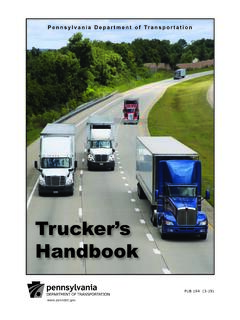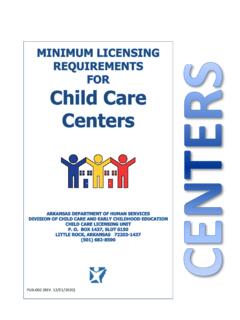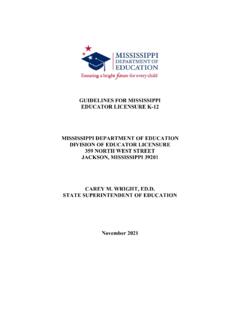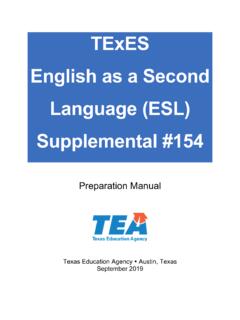Transcription of Idaho Pesticide Applicator Training Manual
1 Idaho State Department of Agriculture ISDA Pub LS-002-17-R1 Idaho Pesticide Applicator Training Manual A guide for safe use and handling of pesticides for applicators, dealers and consultants. Pesticide Safety Education Program Authored/Edited by Sherman K. Takatori Copyright 2017, Idaho State Department of Agriculture Idaho Pesticide Applicator Training Manual A Guide for Safe use and Handling for Pesticide Applicators, Dealers and Consultants Authored/edited by Sherman K. Takatori Preface The Idaho Pesticide Applicator Training Manual will help you understand the Federal and state Pesticide laws and regulations, good environmental stewardship practices, sound pest management practices, and actions that are necessary for the safe and effective handling and application of Pesticide products.
2 In addition, laws and information relating to the sale and distribution of Pesticide products are included for dealers. Because of the complexities of pest control in the modern world, Pesticide applicators must understand the environment that they attempt to control and the types of control options available. Sound pest management practices must consider human safety, human and animal health, and environmental impact. This Manual does not attempt to provide all the information necessary for pest management decisions, but gives basic information critical for Pesticide applicators, dealers and consultants. The Laws & Safety and Private Applicator examinations, administered by the Idaho State Department of Agriculture, are based on information contained in this Manual .
3 In order to obtain a Pesticide license, all applicators, dealers and consultants must know specific information contained within this Manual . All Pesticide Applicator examinations will contain questions specific to the information contained in this Manual . After reading each chapter, answer the review questions to test your knowledge of the chapter. Compare your answers with the correct answers shown at the end of the Manual . The Pre-Test and Post-Test, included in this Manual , will help you will help you prepare for the ce1tification examinations and become familiar with the types of questions the actual examinations will ask. Please use the glossary to define words or terms you do not know prior to taking the examinations.
4 This Manual is a valuable resource for all Pesticide applicators. It contains useful information that will assist applicators in planning and managing a pest control program. Appendices B (Common telephone numbers) and C (Conversion Table) contain additional information that is useful for all persons that handle or apply pesticides . About the author/editor: Sherman K. Takat01 i is a Program Specialist for ISDA's Pesticide Applicator licensing and Training Section. He is responsible for state licensing and Training issues and is a primary contact for project coordination between the University of Idaho , Cooperative Extension; University of Idaho College of Agricultural and Life Sciences (CALS); and ISDA.
5 Acknowledgements In addition to specific sources cited in the text, Cooperative Extension publications from the following universities were valuable sources of information and material: University of Idaho , University of Wisconsin, Penn State University, North Carolina State University, Cornell University, Oregon State University, and Washington State University. Special thanks goes to Dr. Roger Flashinski, University of Wisconsin (Ret); Dr. Edward J. Bechinski, University of Idaho ; Carol A. Ramsay, Washington State University; and Ronda Hirnyck, University ofldaho for information used in this Manual . Additional thanks goes to Ronda Hirnyck and the University ofldaho for the preliminary editing of this Manual .
6 Additional thanks goes to the Idaho State Department of Agriculture, Division of Agricultural Resources for internal review and timely suggestions: George Robinson Luis Urias Bob Spencer Ben Miller Vic Mason A special thank you to Laura Morris for her excellent work reviewing and proof-reading all portions of this Manual . Table of Contents Pre-Test 3 Chauter 6 - Pesticide Hazards and Health 69 Chapter 1 -Introdnction to Pests and Pest Exposure: How pesticides Enter the Body Toxicity and Potential Health Effects of pesticides First Aid for Pesticide Poisoning Management Pest Control Over the Years Contemporary Concerns Pest Management Tactics Integrated Pest Management (1PM)
7 Review Questions Chapter 2 - Pesticide Laws, Rnles and Regulations Pesticide Registration Pesticide Applicator Training and licensing Enforcement Additional Information Pesticide Recordkeeping The Worker Protection Standard Protection of State Waters Other Regulatory Agencies Review Questions Chauter 3 - pesticides Classification of pesticides The Chemistry of pesticides Insecticides Acaricides Herbicides Fungicides Bactericides Nematicides Rodenticides Avicides Plant Growth Regulators, Defoliants, and Desiccants Wood Preservatives Review Questions Chauter 4 - Pesticide Formulations Pesticide Formulations Types of Pesticide Formulations Pesticide Mixtures Adjuvants Review Questions Chauter 5 -The Pesticide Label The Background of a Label Parts of the Label When to Read the Label Review Questions 5 18 34 44 55 I How Organophosphate or Carbamate Insecticides Affect Organisms Review Questions Chauter 7 -Using pesticides Safely Protect Yourself From Pesticide Exposure Mixing and loading Application Storage Disposal Pesticide Concentrates Transportation Fire safety Spills Review Questions 80 Chauter 8 - pesticides and the Environment 101 Pesticide Fate
8 Groundwater Contamination Effects on Non-Target Organisms Review Questions Chauter 9 - Pesticide Auulication Princiules 114 Management and Operator Considerations Methods of Application Application Equipment Equipment Calibration Sprayer Calibration Application Considerations Mixing and Calculations Review Questions Post-Test 135 Pre-and Post-Test Answers 140 Review Question Answers 141 Glossary 144 Auuendix A - Pesticide Labels Auuendix B - Teleuhone Nnmbers Appendix C -Conversion Table NOTES: 2 Pre-Test The following test is designed to provide the trainee with an introduction to some of the facts, concepts and skills you will encounter in this Manual . Another practice exam, the Post-Test, is provided at the end of this Manual (see page 135).
9 These tests and the end of chapter quizzes are designed to help assess your Pesticide knowledge. They also will introduce you to the types of questions and exam format you will encounter on the actual Laws & Safety or Private Applicator exam. If your performance on the Post-Test is not up to your expectations, re-study the parts of the Manual and the questions your missed until you feel confident that you understand the concepts. To do well on the Idaho Law & Safety or Private Applicator exam, you should be able to answer all of the questions on the pre-and post-tests and understand the concepts associated with the questions. Read the entire question and answers and then choose the correct answer.
10 Answers to the pre-and post-test are found on page 140. 1. The key to minimizing the hazard of Pesticide use to the Applicator is to avoid exposure. (True or False) 2. The use of temperature or humidity manipulation is a _____ control method for pests. A. Cultural B. Biological C. Legal D. Physical 3. Pesticide drift problems can be reduced using: A. Lower sprayer pressure and smaller nozzle orifices. B. Applying in very calm, stable air conditions. C. Spraying upwind of a sensitive area and leaving an untreated border. D. Using a nozzle that produces larger droplets. 4. Which is not a disadvantage of an emulsifiable concentrate Pesticide ? A. Higher phytotoxicity hazard.








